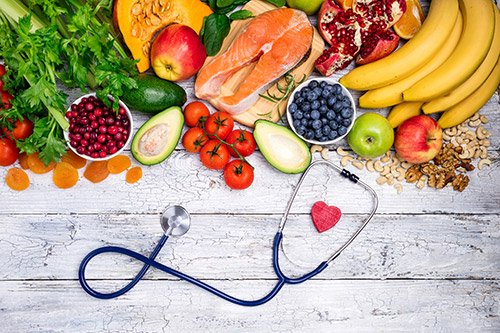With resolutions for the New Year comes predictions on trends for everything from fashion to home furnishings to relationships to food and diet. At the beginning of every year, virtually every facet of the food and beverage industry “weighs in” on what the year’s hot trends will be. While some of these trends seem to be little more than a wild guess, there is some agreement on what will make the in-list. But remember, food forecasting is in no way an exact science.
From Pinterest to Uber Eats to dieticians to the grocery giant Whole Foods, here are a few of the top trends forecasters seem to agree on:
- Pegan diet: Not to be confused with “pagan,” and rhymes with vegan. This “diet” is essentially a mix of Paleo and vegan diets with lots of fruits and vegetables, high-quality fats, lean protein, limited amounts of whole grains, and nothing processed. Dieticians would remind us that grains, legumes, and dairy foods contain important nutrients, so make sure to get these in other ways if you’re following these diets.
- CBD (cannabidiol)-infused drinks: CBD oil is a product derived from hemp which is now being added to sparkling water, lattes, and other beverages to give them an added “boost,” while lacking the chemicals that produce a “high.” Look for hemp hearts, seeds, and oils to appear in even more products. CBD oil is still technically prohibited (and therefore unregulated) in food, body care, and dietary supplements by federal law, the food industry is finding ways around this. Companies are also infusing food and beverages with essential oils such as lavender, tea tree oil, and peppermint.
- Pacific Rim flavors: As US foodies explore the world through food, ingredients and flavors from Asia, Oceania, and the western coasts of North and South America are gaining in popularity. Look for fruits such as guava, dragon fruit, passion fruit, Jackfruit, as well as longganisa (a Filipino pork sausage), dried shrimp, cuttlefish, and shrimp paste. Other “experts” see a rise in dishes from the “Stans” – Kazakhstan, Tajikistan, and Uzbekistan.
- Innovative desserts and frozen treats: Tahini is making its way out of the Middle East into western diets, with some describing it as the “new almond butter.” Both hummus (derived from chickpeas) and tahini are being used in cocoa, peanut butter, cookie dough, and ice cream. Avocado and coconut water are also becoming more common ingredients in frozen non-dairy treats.
- Nut butter alternatives. In addition to chickpeas and sesame seeds, other seeds are replacing the more traditional nut-butters such as peanut, cashew, and almond. Sunflower, pumpkin, and even watermelon seeds are now being blended into spreads which are especially good alternatives for individuals with nut allergies. Be sure to watch for added sugars.
- Replacements for carbs in recipes. Cauliflower has been on the scene for a while as a healthy and easy substitute for traditional starches in many recipes for lower carbs and fewer calories. Expect cauliflower to continue to appear in all sorts of recipes for things like pizza crust, rice, potato dishes, and even smoothies.
In addition to these so-called trends, new research about food and nutrition appears almost every day. How do you keep it all sorted out and decide what is best for you and your family? What information is based on scientific evidence and what is merely clever marketing? The Dietary Guidelines for Americans are evidence-based food and beverage recommendation for ages 2 and older. MyPlate is a tool which will help you follow the advice in the Dietary Guidelines. It contains a variety of resources for consumers. And reading food labels is the best way to learn what is in the foods and beverages you buy.
There is certainly no harm in trying new foods and different approaches to healthy eating, but it’s easy to get lost in the hype. Integrity Urgent Care always has the health of you and your family at the center of all we do. Be sure to check with your healthcare professional before beginning any new diet plan and feel free to contact us with any food and nutrition questions or concerns.
Resources:
Ayuda T. 12 Health food trends you’ll see everywhere in 2019, according to dieticians. Prevention [online]. 15 Jan 2019 [accessed 16 Jan 2019]. https://www.prevention.com/food-nutrition/healthy-eating/g25727882/food-trends-2019/
Gillett K. 11 Top food trends in 2019. The National [online]. 14 Jan 2019 [accessed 16 Jan 2019]. https://www.thenational.ae/lifestyle/food/11-top-food-trends-in-2019-1.812735
Houck B. Literally every single food trend predicted to take over 2019. Eater [online blog]. 26 Dec 2018 [accessed 16 Jan 2019]. https://www.eater.com/2018/12/26/18139840/food-and-restaurant-trends-2019-prediction
Severson K. A peek at your new plate: how you’ll be eating in 2019. The New York Times [online]. 21 Dec 2018 [accessed 16 Jan 2019]. https://www.nytimes.com/2018/12/21/dining/food-trends-predictions-2019.html
Valente L. The healthy food trends we predict you’ll see everywhere in 2019. EatingWell Daily Nosh [online]. 8 Jan 2019. [accessed 15 Jan 2019]. http://www.eatingwell.com/article/291415/the-healthy-food-trends-we-predict-youll-see-everywhere-in-2019/?did=324395-20190108&utm_campaign=daily-nosh_newsletter&utm_source=eatingwell.com&utm_medium=email&utm_content=010819&cid=324395&mid=17616327097
Whole Foods Market. Our top 10 food trends for 2019. Wholefoodsmarketonline.com [online]. [accessed 16 Jan 2019]. https://www.wholefoodsmarket.com/top-10-food-trends-2019



